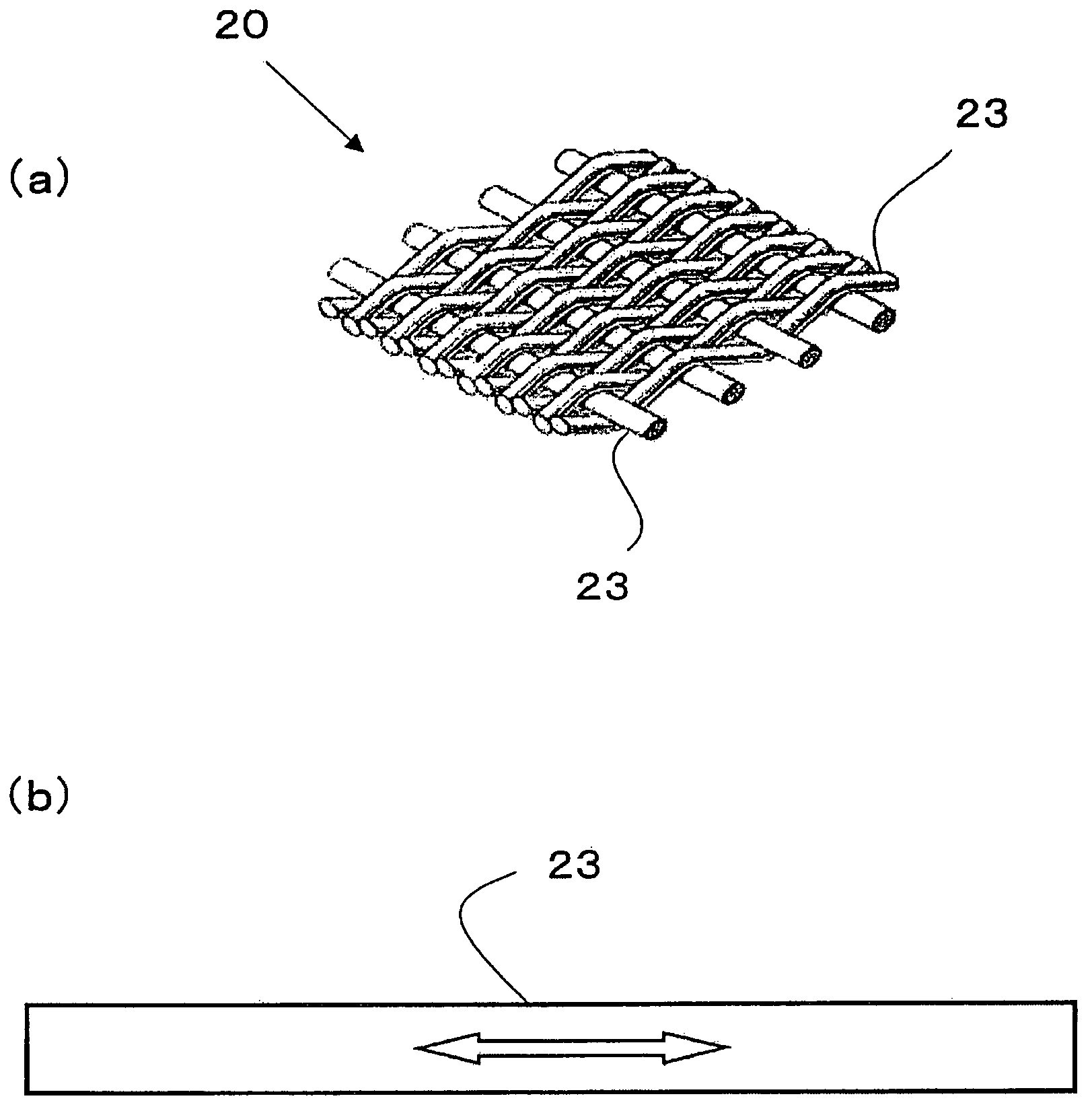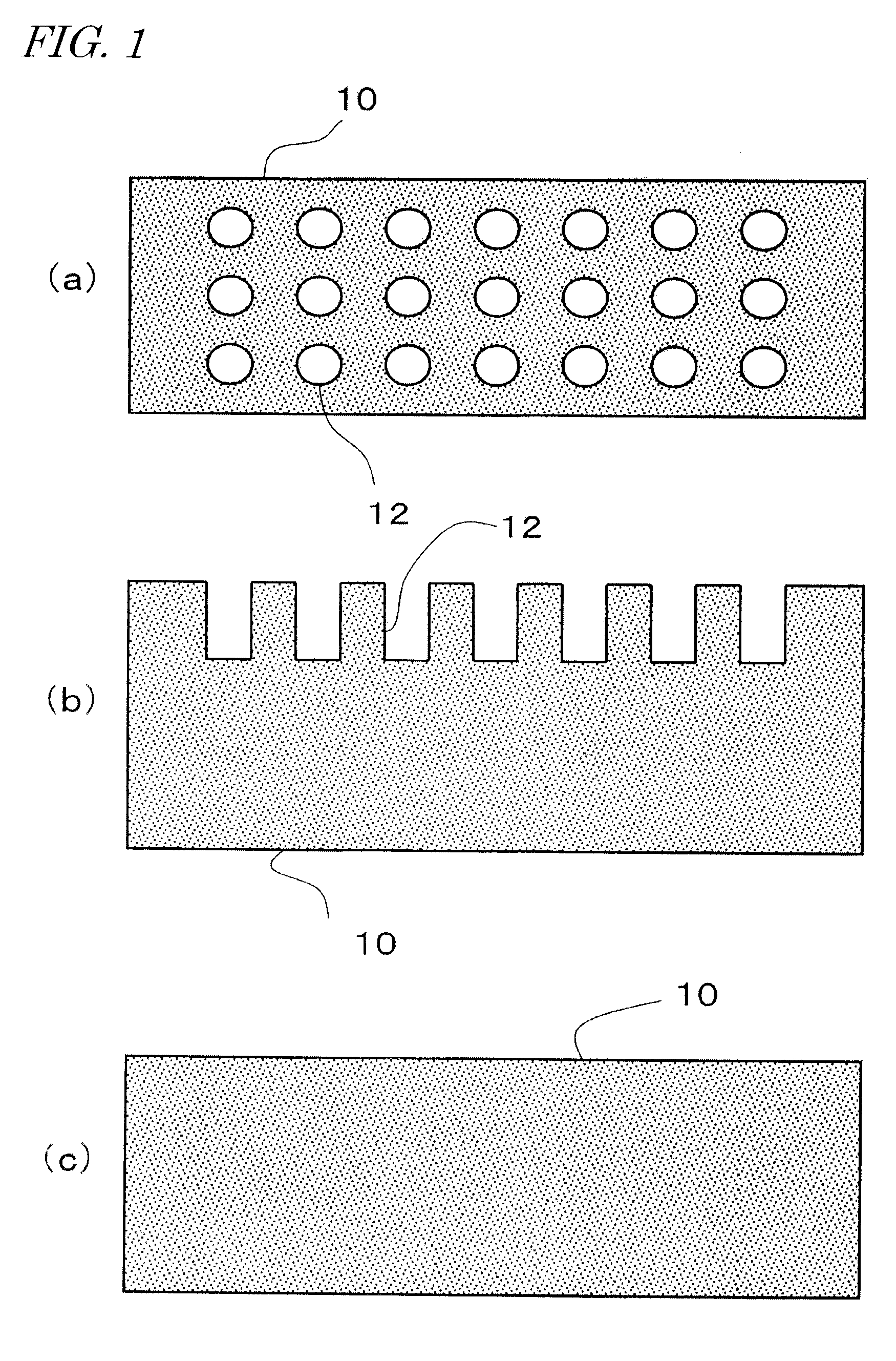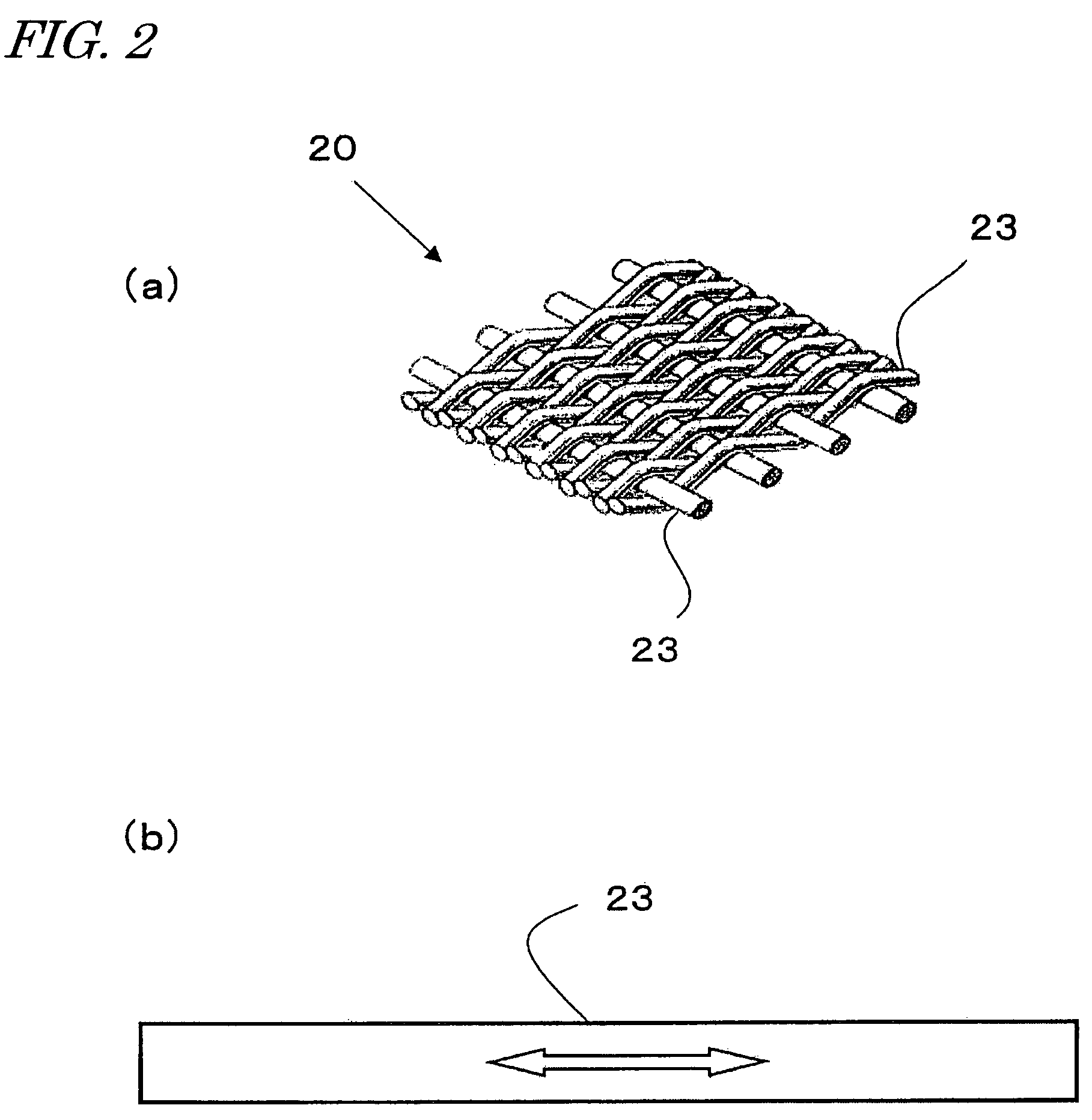Energy converter and method of making the same
a technology of energy converter and energy converter, which is applied in the field of illumination source, can solve the problems of inability to convert energy into visible radiation without radiating a lot of infrared rays, the wavelength is too long to sense with human eyes, and the expense of visible radiation, etc., and achieves the effects of increasing the ratio of visible radiation to infrared radiation, long life, and high luminous efficacy
- Summary
- Abstract
- Description
- Claims
- Application Information
AI Technical Summary
Benefits of technology
Problems solved by technology
Method used
Image
Examples
embodiment 1
[0038]First, a first preferred embodiment of an energy converter according to the present invention will be described with reference to FIG. 4.
[0039]The energy converter of this preferred embodiment shown in FIG. 4 includes a heat source that emits electromagnetic radiations when heated to a high temperature (which will be referred to herein as a “radiator 1”) and a radiation cut means provided around the radiator 1. In this preferred embodiment, the structure functioning as the radiation cut means is a mesh 2 obtained by weaving tungsten fine wires together.
[0040]The radiator 1 is usually preferably made of a material that can be used as a filament for an incandescent lamp. However, the “radiator” is not limited herein to the filament that generates heat and emits light in a normal incandescent lamp. Nevertheless, if the energy converter of the present invention is used in an illumination source, then the radiator may be made of a known filament material used in an ordinary incande...
embodiment 2
[0064]Hereinafter, a second preferred embodiment of an energy converter according to the present invention will be described with reference to FIG. 6.
[0065]In the preferred embodiment illustrated in FIG. 6, the radiation cut means is implemented as a stack of multiple meshes 2. Each of these meshes 2 may have a configuration just as described for the first preferred embodiment. In this preferred embodiment, the meshes 2 are stacked one upon the other such that associated openings of all those meshes 2 stacked are aligned with each other. In this manner, the openings functioning as the waveguides (i.e., micro-cavities) can have a substantially increased depth (i.e., waveguide length). Accordingly, even if the stack of meshes 2 is arranged a little distant from the radiator 1 but if the depth of the openings of the meshes 2 is at least 1.5 times as large as the aperture size of the meshes 2, then the emissivity of the visible radiation through the openings of the meshes 2 can be incre...
PUM
 Login to View More
Login to View More Abstract
Description
Claims
Application Information
 Login to View More
Login to View More - R&D
- Intellectual Property
- Life Sciences
- Materials
- Tech Scout
- Unparalleled Data Quality
- Higher Quality Content
- 60% Fewer Hallucinations
Browse by: Latest US Patents, China's latest patents, Technical Efficacy Thesaurus, Application Domain, Technology Topic, Popular Technical Reports.
© 2025 PatSnap. All rights reserved.Legal|Privacy policy|Modern Slavery Act Transparency Statement|Sitemap|About US| Contact US: help@patsnap.com



